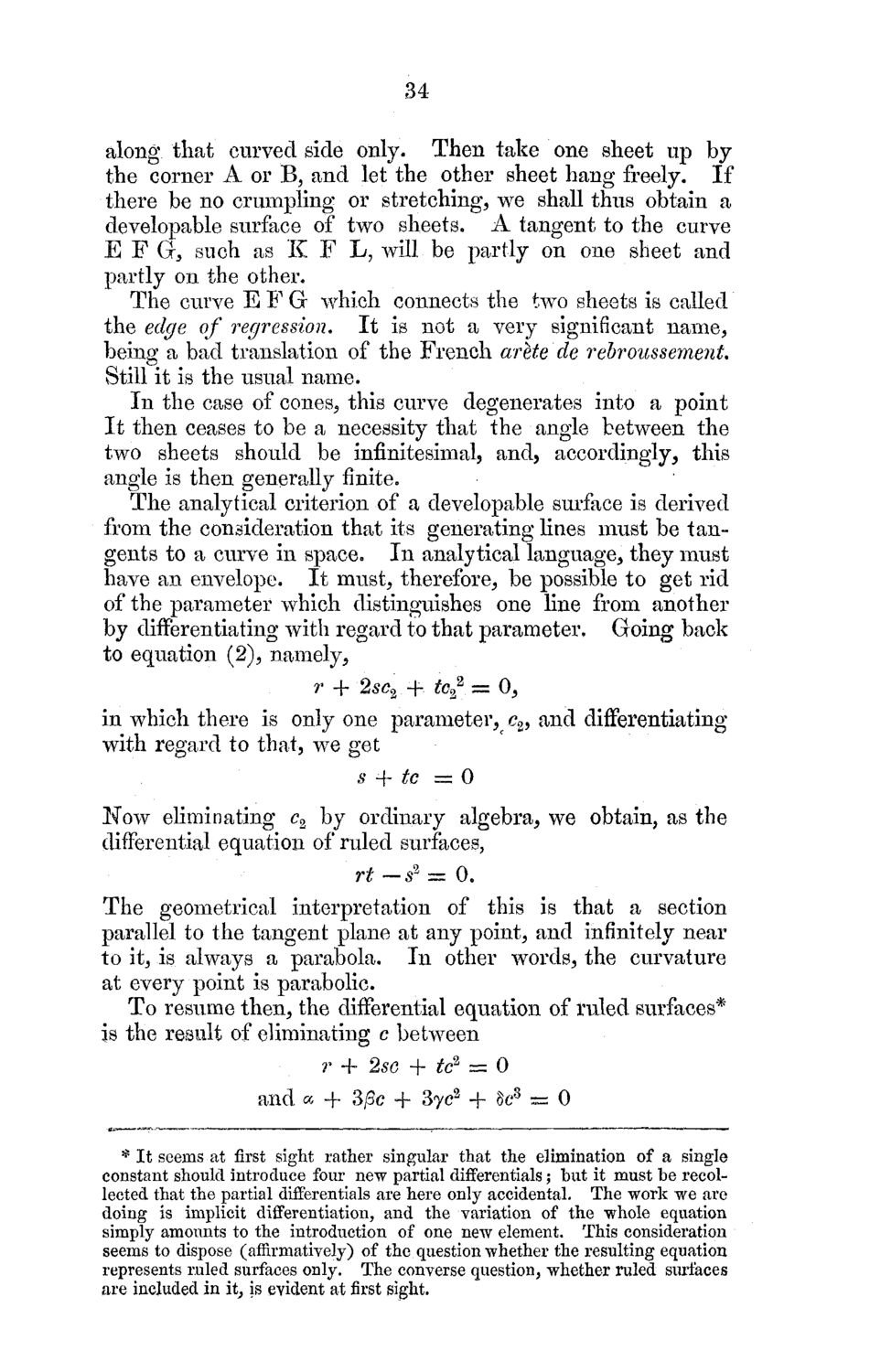| |
| |
Caption: Mathematical Models Catalog of a Collection of Models of Ruled Surfaces
This is a reduced-resolution page image for fast online browsing.

EXTRACTED TEXT FROM PAGE:
34 along that curved side only. T h e n take one sheet up by the corner A or B , and let the other sheet hang freely. If there be no crumpling or stretching, w e shall thus obtain a developable surface of two sheets. A tangent to the curve E F G j such as K F L , will be partly on one sheet and partly on the other. T h e curve E F Gr which connects the two sheets is called the edge of regression, lit is not a very significant name, being a bad translation of the French arete de rebroussement Still it is the usual name. In the case of cones, this curve degenerates into a point It then ceases to be a necessity that the angle between the two sheets should be infinitesimal, and, accordingly, this angle is then generally finite. T h e analytical criterion of a developable surface is derived from the consideration that its generating lines must be tangents to a curve in space. In analytical language, they must have an envelope. It must, therefore, be possible to get rid of the parameter which distinguishes one line from another by differentiating with regard to that parameter, Going back to equation (2), namely, r + 2sc2 + tc%2 z= 0, in which there is only one parameter, e2, and differentiating with regard to that, w e get s .+ tc = 0 Now eliminating c2 by ordinary algebra, we obtain, as the differential equation of ruled surfaces, The geometrical interpretation of this is that a section parallel to the tangent plane at any point, and infinitely near to it, is always a parabola. In other words, the curvature at every point is parabolic. T o resume then, the differential equation of ruled surfaces* is the result of eliminating c between r + 2sc + tc2 = 0 a n d a + 3/3c + 3<yc2 + 8c8 = 0 * It seems atfirstsight rather singular that the elimination of a single constant should introduce four new partial differentials; but it must be recollected that the partial differentials are here only accidental. The work w e are doing is implicit differentiation, and the variation of the whole equation simply amounts to the introduction of one new element. This consideration seems to dispose (affirmatively) of the question whether the resulting equation represents ruled surfaces only. The converse question, whether ruled surfaces are included in it, is evident atfirstsight.
| |